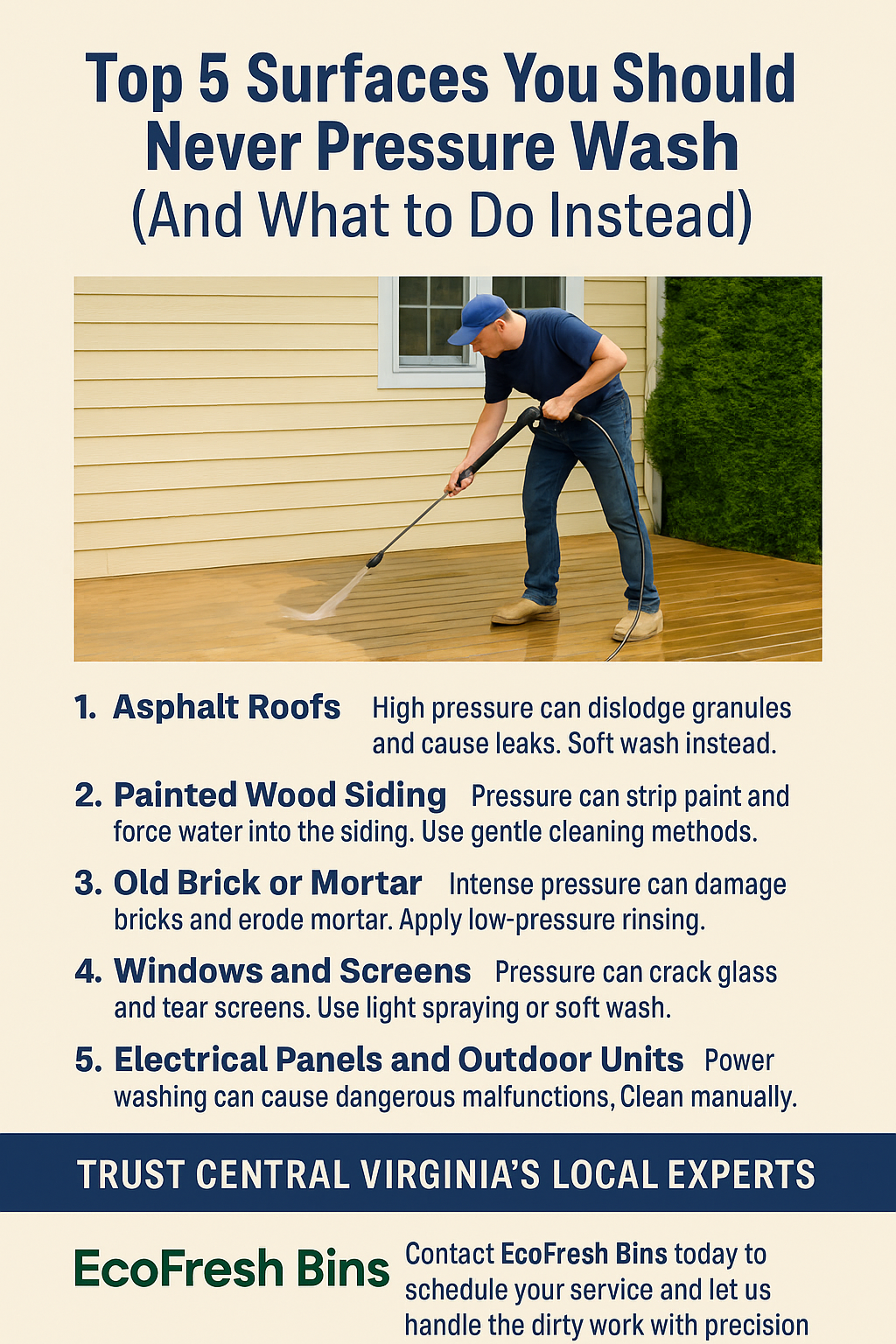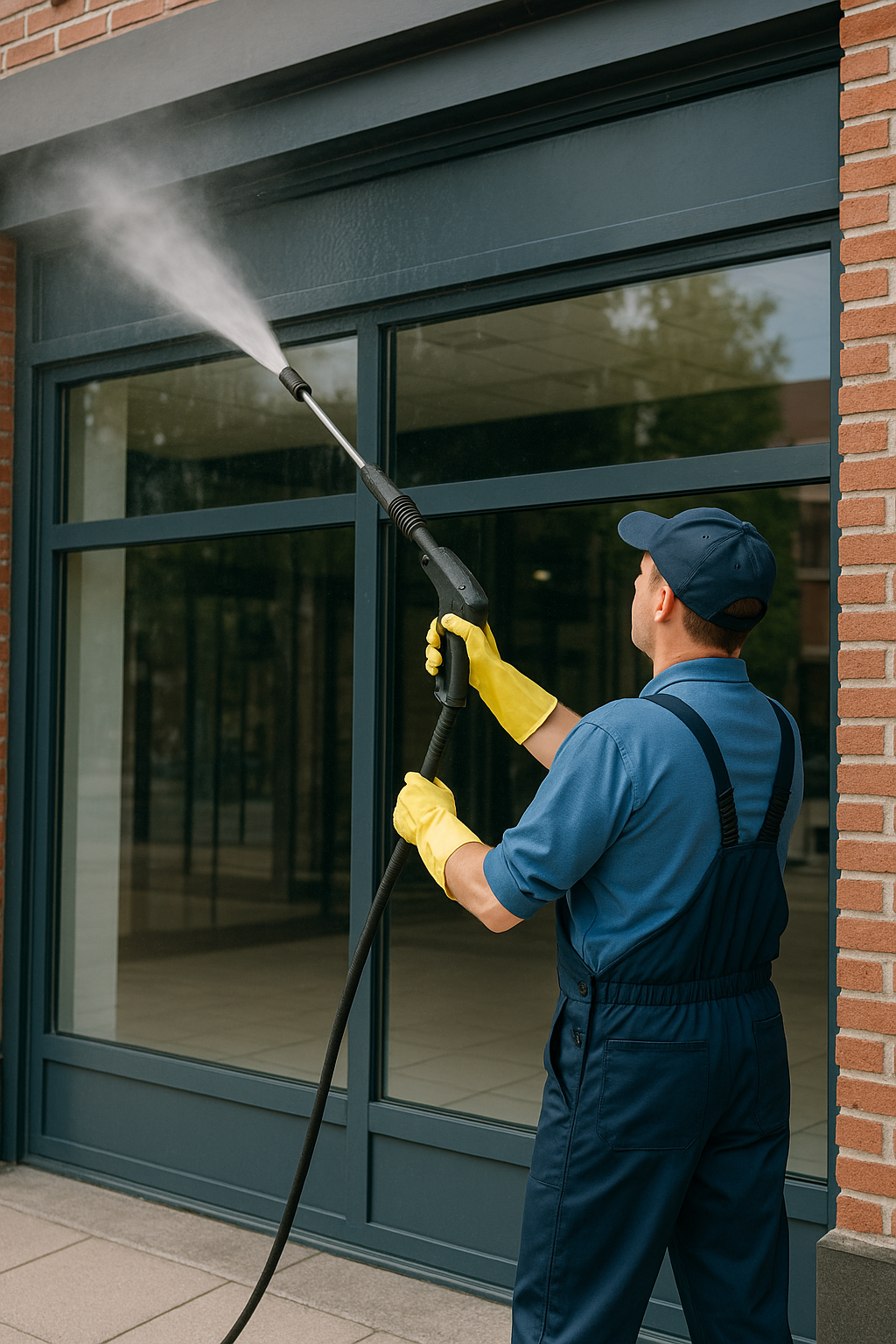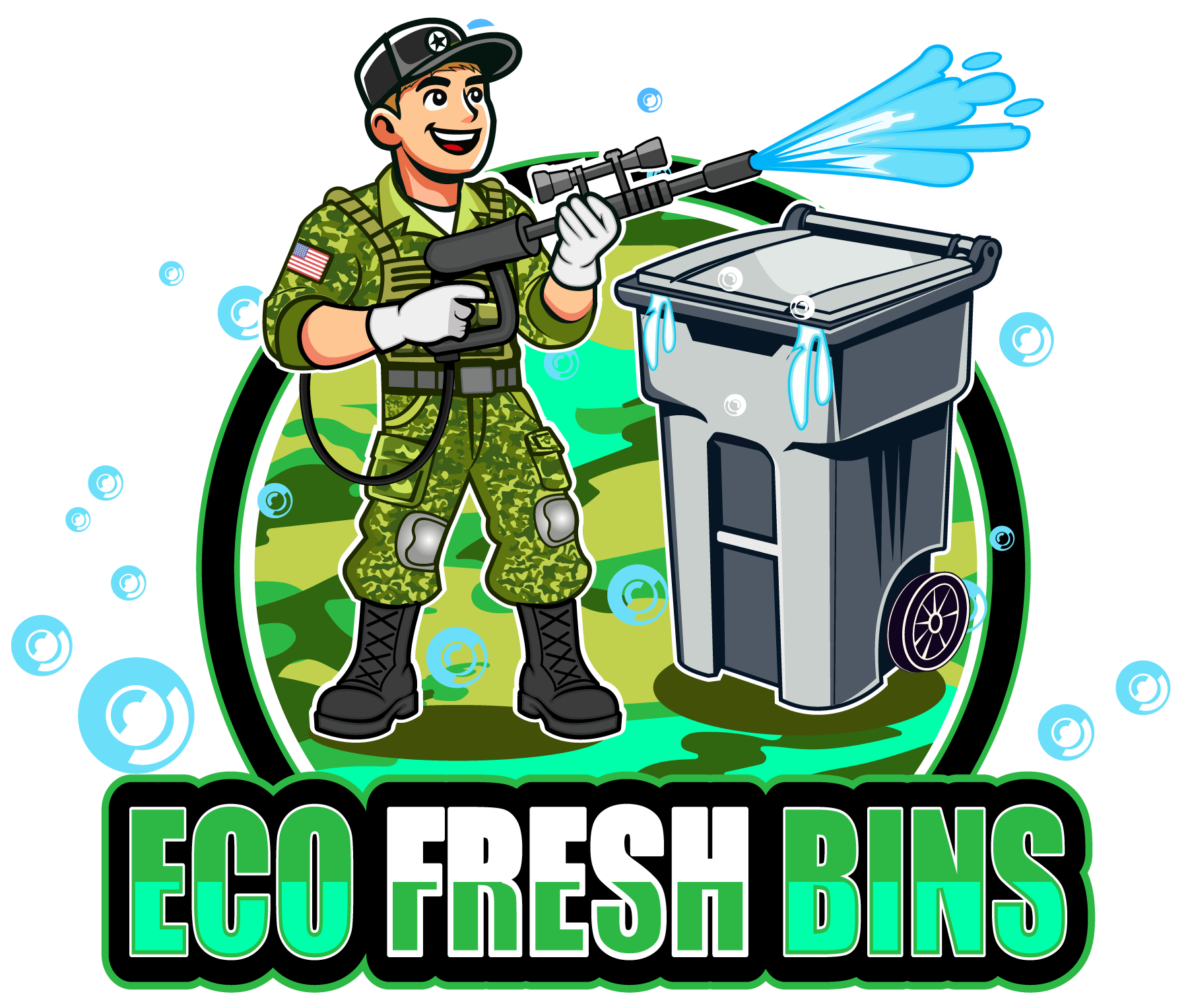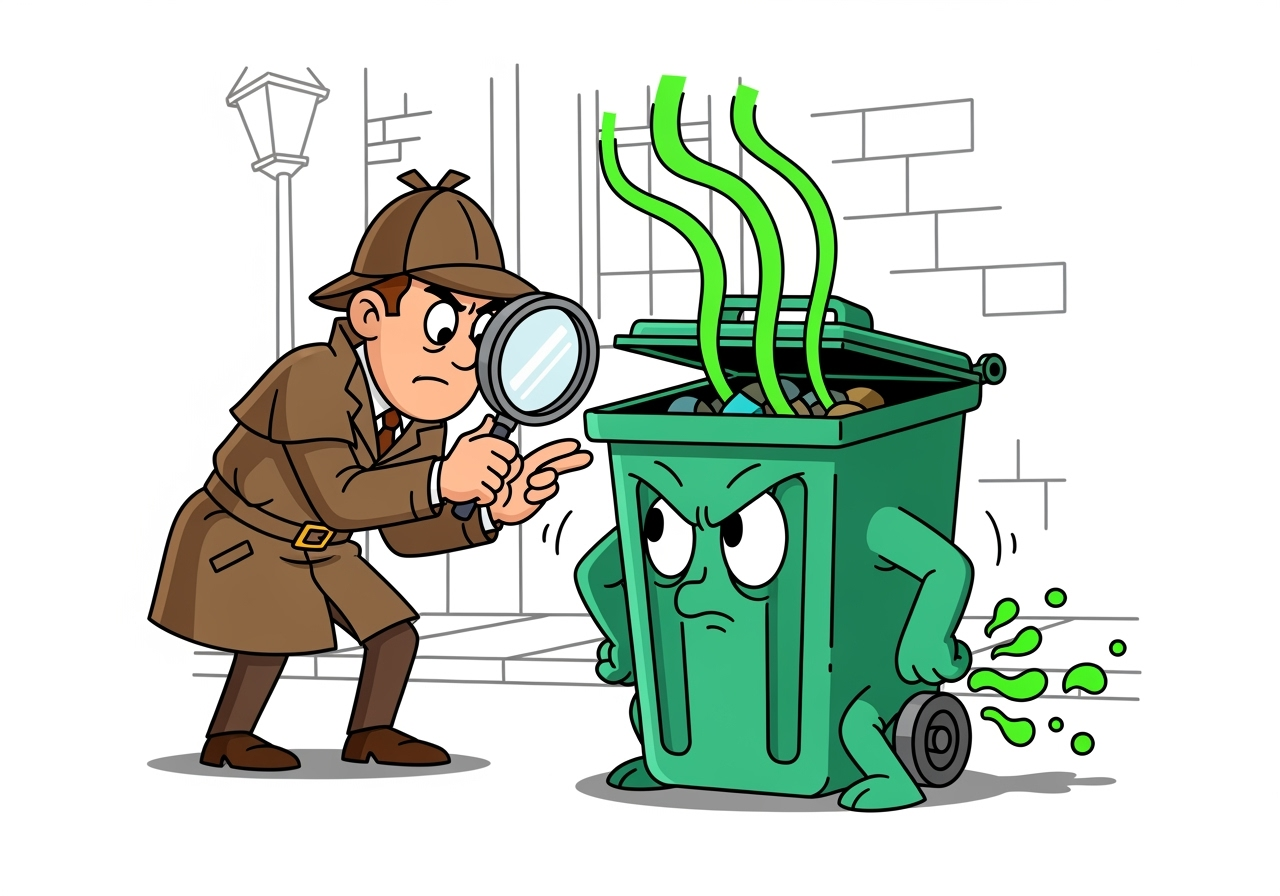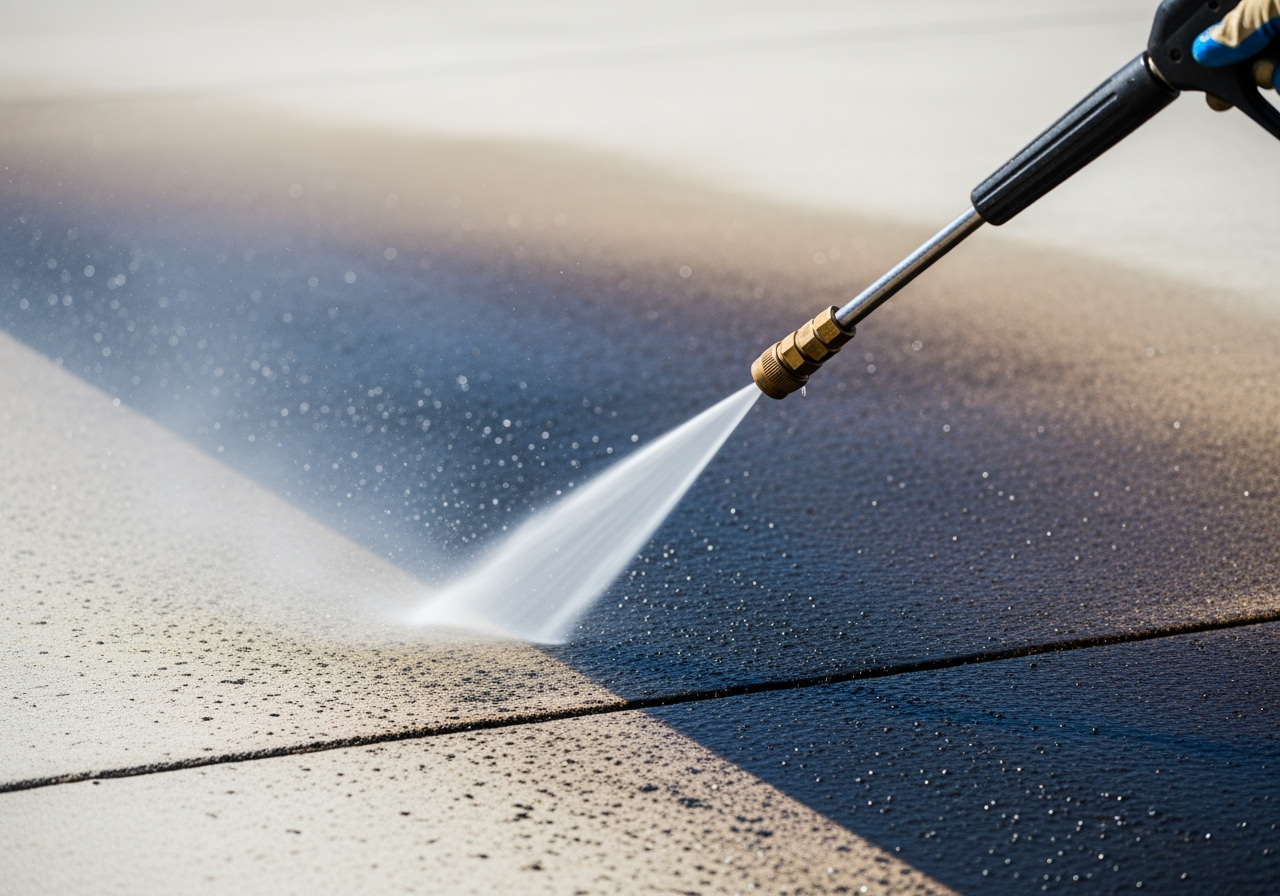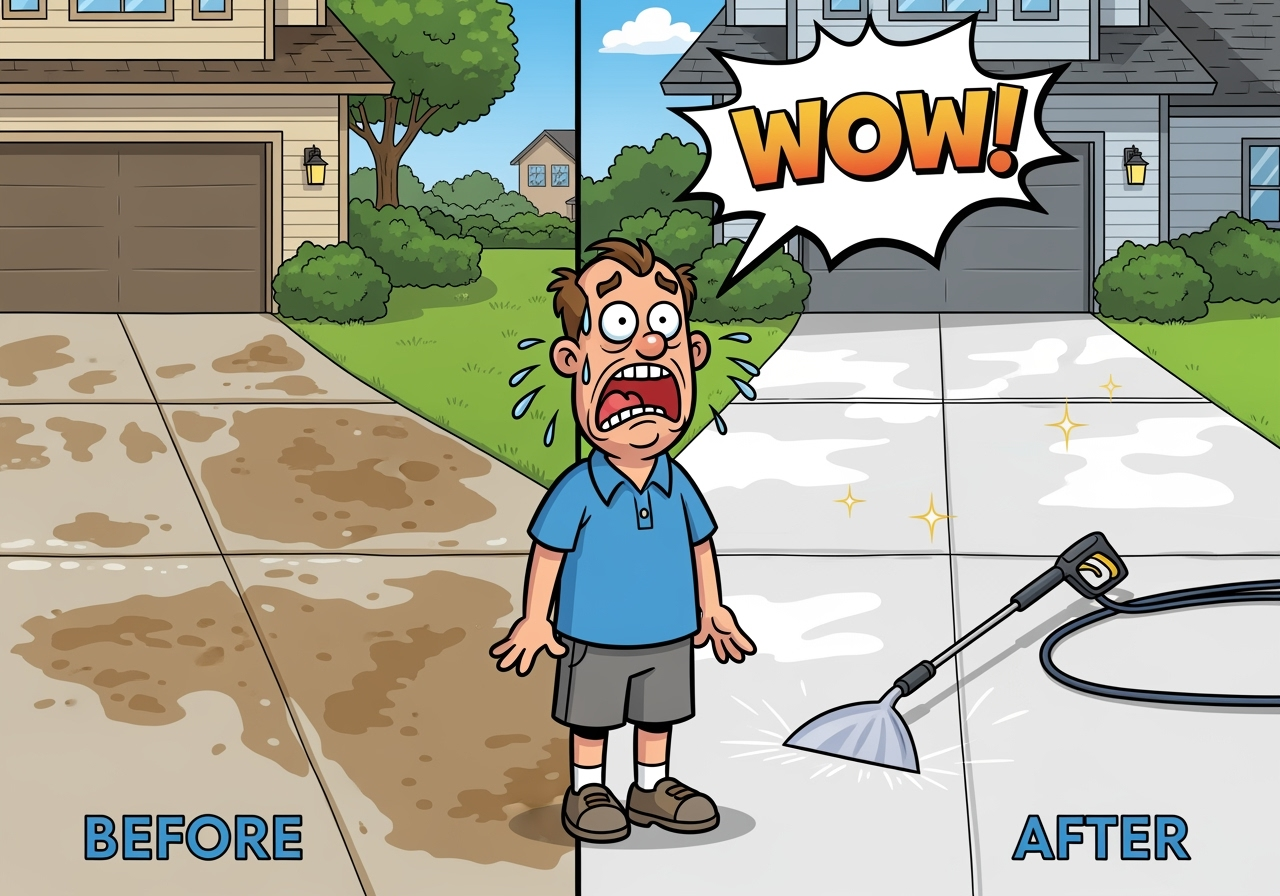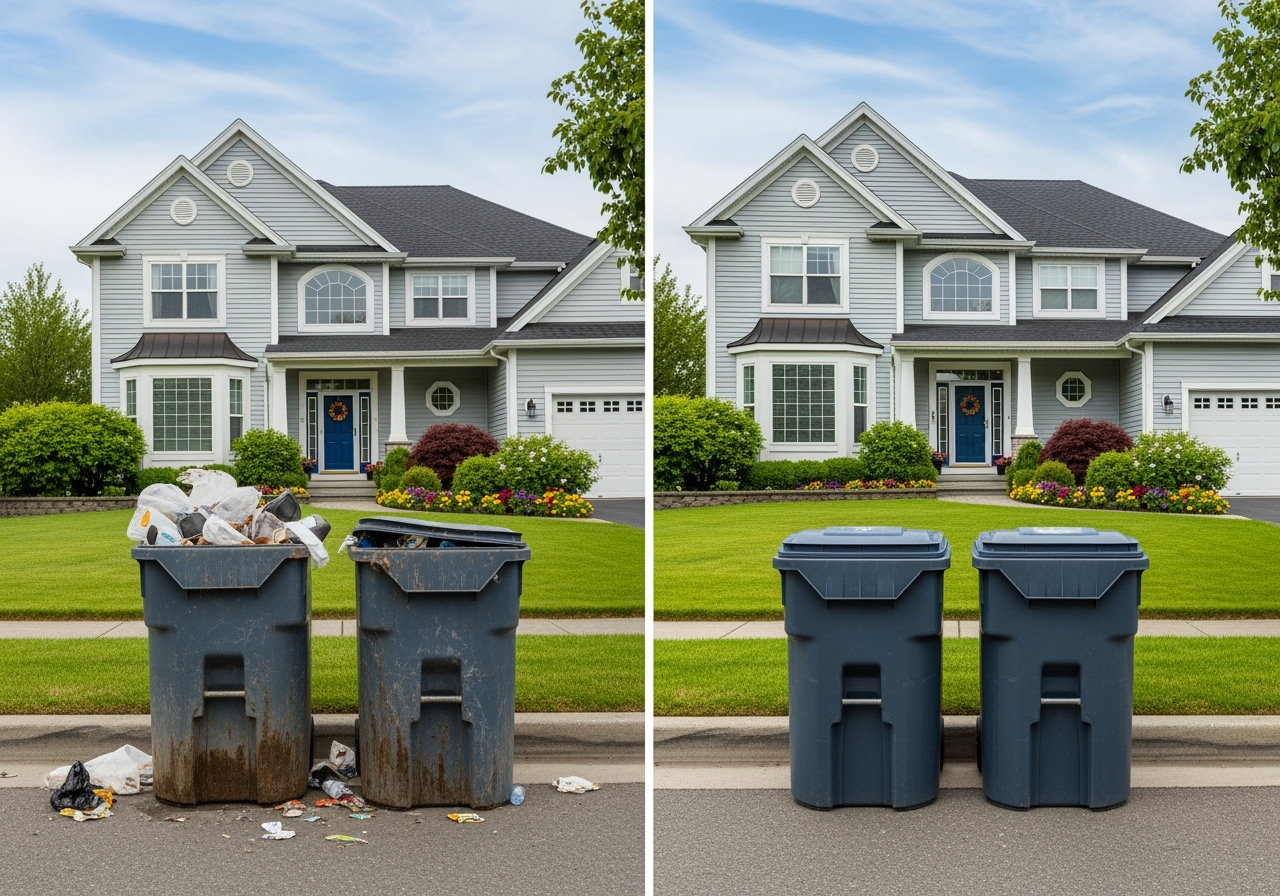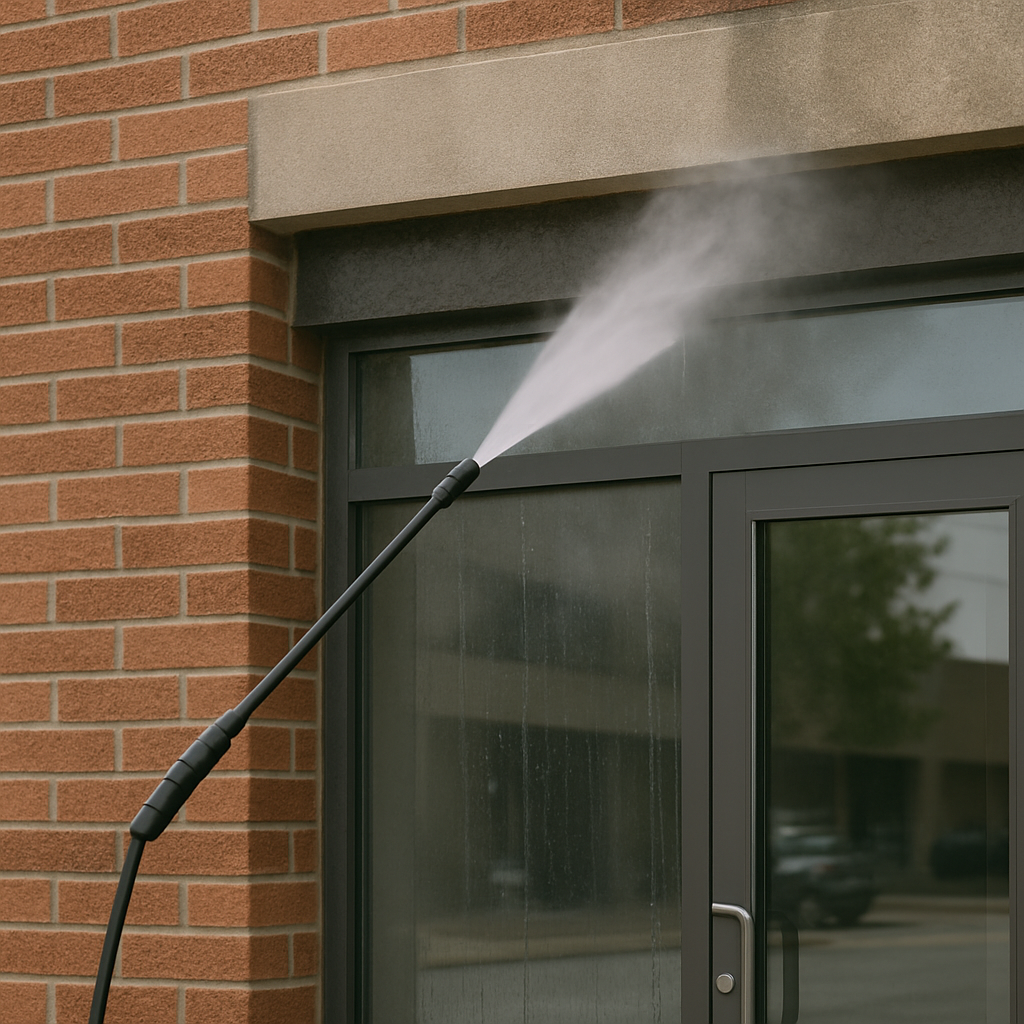How to Powerwash a House: Tips & Key Benefits

Maintaining a clean house exterior is more than just about aesthetics. It's about preserving the integrity of your home.
Powerwashing a house is a highly effective method for this task. It removes dirt, grime, mold, and other contaminants that can damage your home's exterior.
But why is powerwashing so important?
Regular powerwashing can extend the life of your home's siding and paint job. It can increase curb appeal and potentially the value of your home.
This guide will walk you through the process of powerwashing your house. It will also provide practical tips for effectively powerwashing siding and other surfaces.
So, let's dive in and learn how to powerwash a house and why it's so important.
The Importance of Powerwashing Your House
Choosing the Right Equipment for Powerwashing
Choosing the right equipment is crucial for effective powerwashing. Not all pressure washers are created equal. Each one suits different cleaning tasks.
The power of the washer depends on the PSI (pounds per square inch) and GPM (gallons per minute). These numbers determine how powerful and efficient the washer is. Matching the power to your specific needs is key.
Additionally, consider the pressure washer's durability and ease of use. A quality machine should withstand regular use. It should also be easy to handle and maintain, ensuring long-term reliability.
Finally, balance cost with features. Sometimes spending a bit more upfront can save hassles later. Cost-effective, high-quality machines are often worth the investment for frequent powerwashers.
Selecting the Correct Pressure Washer
Selecting the right pressure washer involves understanding your cleaning needs. Light-duty tasks require less power. A pressure washer with lower PSI is suitable for such tasks.
For heavy-duty cleaning, you'll need a more powerful washer. Higher PSI and GPM ratings are better for deep cleaning. They help tackle stubborn dirt and larger areas efficiently.
Consider the surface materials you'll be cleaning. Delicate surfaces require less pressure, whereas tough surfaces can handle more. This consideration will guide you in choosing appropriately.
Understanding PSI and GPM Ratings
PSI refers to the force of the water spray. Higher PSI means more cleaning power. It's suitable for removing tough stains and grime.
GPM measures water flow from the washer. Higher GPM implies faster cleaning. It helps rinse off dirt and soap quickly and effectively.
Balancing PSI and GPM is essential. High PSI with low GPM may be less efficient. Understanding these ratings ensures you pick the right washer for your needs.
Nozzles and Accessories
Selecting appropriate nozzles enhances powerwashing results. Different nozzles offer varied spray patterns. Choose the right pattern for the task to ensure effective cleaning.
A zero-degree nozzle provides a concentrated spray. It's powerful but should be used with care to avoid damage. A 25-degree nozzle is versatile and suitable for most surfaces.
Consider additional accessories like extension wands and surface cleaners. These tools make the job easier and more efficient. They help reach high areas and clean large surfaces evenly.
Preparing Your House for Powerwashing
Before starting, preparation is key to a successful powerwashing. First, clear the area around your home. Move any outdoor furniture and décor to a safe distance.
Check for any obstructions or hazards that might get in the way. Remove loose debris and secure anything that could shift or fall. This ensures a smooth workflow and prevents accidents.
Inspect your home’s exterior for signs of damage. Cracks or loose siding could worsen with the pressure. Address these issues before proceeding to avoid further damage during powerwashing.
Protecting Surrounding Areas and Plants
It's crucial to shield plants and landscaping from high-pressure water. Cover delicate plants with plastic sheets or tarps. This prevents the force of water from damaging leaves and roots.
Also, create a protective boundary. Use mulch or stones to redirect water away from garden beds. This ensures the safety and health of your plants post-wash.
Sealing Windows and Doors
Properly sealing windows and doors prevents water damage. Check seals and caulking for gaps or wear. Secure or replace them as needed for optimal protection.
Use painter’s tape around window frames and door edges. This extra layer safeguards against water seeping into the house. Ensuring tight seals is vital for preventing interior water damage.
The Powerwashing Process
Begin by ensuring your equipment is set up and functioning properly. Consistency in the process is key to a clean house exterior. Start at a low pressure and gradually increase to prevent any unintended damage.
It's important to work methodically. Start from the top and move downward. This helps prevent streaks and ensures all dirty water flows down, away from cleaned areas.
Remember to use a steady, sweeping motion. This ensures even coverage and effective cleaning without missing spots or causing excess pressure.
Applying Detergents and Cleaning Solutions
Choose a suitable detergent designed for powerwashing a house. This helps to effectively break down grime and stains. Avoid harsh chemicals that might damage surfaces.
Mix the detergent according to the manufacturer's instructions. Apply it evenly, letting it sit for several minutes. This allows it to loosen dirt before rinsing, enhancing the overall result.
The Best Techniques for Powerwashing Siding
To power wash siding effectively, maintain an appropriate distance. This prevents etching or gouging sensitive surfaces. A distance of a few feet is usually sufficient.
Hold the spray nozzle at a consistent angle, around 45 degrees. This angle provides optimal pressure distribution. It helps clear away dirt without forcing water behind the siding.
Move in a side-to-side motion, overlapping each pass. This technique ensures no area is missed. It also maintains a uniform look across the siding surface, preserving its appearance.
Rinsing and Post-Cleaning Care
Once the detergent has done its job, rinse thoroughly. Start from the top again, ensuring all soap is washed away. This prevents streaking and residue buildup.
After rinsing, inspect the house exterior for any missed spots. Address these promptly for a completely clean finish. Ensure all surfaces are dry before removing coverings from plants and décor.
Safety Precautions and Best Practices
Safety is paramount when powerwashing a house. Always read and follow the equipment's manual before beginning. This helps prevent accidents and ensures optimal use.
Be mindful of your surroundings during the process. Secure loose objects and avoid slippery surfaces. Stay aware of power lines and electrical outlets to prevent electrical hazards.
Check local regulations about water usage and runoff. Adhering to these guidelines protects the environment and can prevent legal issues. Proper preparation and awareness enhance both safety and results.
Personal Protective Equipment (PPE)
Wearing the right gear is crucial for your safety. Use goggles to shield your eyes from debris and splashes. Gloves protect your hands while handling equipment and chemicals.
Non-slip boots provide stability on wet surfaces. They reduce the risk of falls, ensuring you remain steady during the task. Full-length clothing prevents direct skin exposure to detergents and high-pressure water.
Avoiding Common Mistakes
Avoid using excessive pressure. High pressure can damage surfaces and cause injury. Adjust settings based on the surface material to prevent unwanted effects.
Always start at a distance and test in an inconspicuous area. This ensures compatibility and reduces potential damage risk. Take your time to avoid rushing the process, achieving thorough and even cleaning.
When to Hire a Professional Powerwashing Service
Consider professional help for complicated projects. This is especially true if you are dealing with high areas or stubborn stains. Experts have the right tools and experience for such tasks.
Hiring a professional can save you time. It also prevents potential damage from DIY errors. Professionals ensure a thorough and efficient job, giving you peace of mind.
Conclusion: The Benefits of Regular Powerwashing
Regular powerwashing offers numerous benefits for your home. It enhances curb appeal and prolongs the life of siding and paint. It also protects against mold and mildew.
In addition to maintenance, powerwashing is an investment in property value. The process is effective, efficient, and environmentally friendly when done right. Embrace regular powerwashing to keep your home looking its best.
